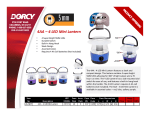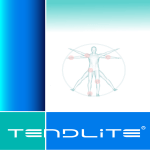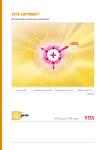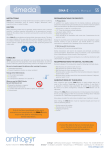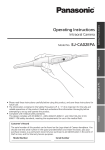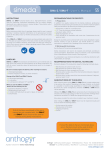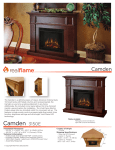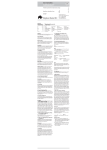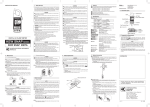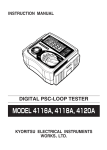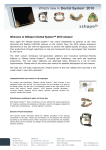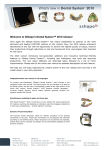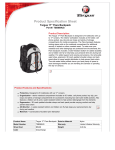Transcript
English INSTRUCTION FOR USE Framework model and tooth preparation Fabricate a working model with removable segments as usual. The directions of the different CAD/CAM systems regarding the plaster to be used must be observed. User Manual NANOZR milling blank Important for die preparation: - Check the radius of the incisal/occlusal edge on the prepared die (maxilla and mandible). - The prepared incisal edge should be at least as thick as the diameter of the bur used in the cavity during the CAD/CAM process. - If the incisal edge of the prepared die is thinner than the diameter of the bur, the incisal edge has to be blocked out accordingly. - Also observe the information provided by the manufacturer of the CAD/CAM system regarding the die geometry. Material specific framework parameters The restoration design is key to the success of durable all-ceramic restoration. The more attention is given to the design, the better the final results and clinical success will turn out to be. The following basic guidelines have to be observed. 0123 - The NANOZR milling blank’ s material is the high-strength component of your restoration and must always be given a design that supports the overall shape and cusps. - In large preparations and for veneered or partially veneered restorations, the excess available space must be compensated by the corresponding dimensions of the high strength and high toughness NANOZR milling blank component and not by the pressed-on or layered-on materials. The design of the restoration generated by the software has to be individually adjusted, if necessary, in accordance with the clinical situation using the design tools. - If possible, the connector design should be extended in the vertical direction, rather than in the horizontal direction. EN ISO 13485 Manufacturer Panasonic Healthcare Co., Ltd. 247 Fukutake-ko, Saijo, Ehime 793-8510, Japan The following minimum thickness has to be observed for the framework design with NANOZR milling blank (after full-sintered): Please note: The minimum dimensions of the NANOZR milling blank’ s framework before full sintering must be larger by the shrinkage factor. European Representative Panasonic Testing Centre Panasonic Marketing Europe GmbH Winsbergring 15, 22525 Hamburg, Germany USER MANUAL : LSQC0674A X Y Z Finishing of framework It is of critical importance to use the correct grinding instruments for finishing and adjusting NANOZR milling blank. The following notice have to be observed. - Non full sintered blanks are susceptible to damage and fracture. This fact has to be kept in mind during the entire working procedure. - All adjustments by grinding should always be carried out while the framework is still in its non full sintered stage, if possible, do not use water/oil cooling or contact media (e.g. occlusion spray) - The non full sintered framework must not be cleaned with ultrasonic on water bath or with a steam jet. - Do not blast the framework with Al2O3 or glass polishing beads. Final sintering Once the framework is completely dry, the sintering procedure can be carried out. During the sintering process, the framework will shrink to its final size. - Room temperature to final temperature 1450℃ - Hold time at final temperature 2 hours - Cooling down phase up to room temperature: approx. 5℃/min Page 1/6 Page 3/6 A nterior R eg ion Common name: Zirconia dental ceramics Material type: Ce-TZP/Al2O3 nanocomposite ceramics Minimum framework dimensions Indications and Dental ceramic type: Substructure ceramic for dental restoration or prostheses Type Ⅱ, Class 6 according to EN ISO 6872:2008 C row ns 0.3 mm Splinted crowns 3-unit bridges 0.3 mm 0.3 mm 4-7-unit bridges with 2pontics 8-12-unit bridges with 2pontics Cantilever bridges with 1pontic 0.3 mm 0.7 mm 0.7 mm NANOZR milling blank is milled into the required frame shapes by typical milling systems used by dental technician. The milling frame must add approximately 17% to the original size, so as to compensate for shrinkage during the final sintering process. The exact shrinkage ratio or expansion factor is given according to the milling system used. TECHNICAL DATA C onnector dim ensions P osterior R eg ion Posterior Region Minimum framework dimensions 67.9 wt% < 4.0 wt% 10.6 wt% 21.5 wt% C onnector dim ensions 1290 MPa 8.62 MPa√m 3 5.52 g/cm -6 10.0±0.5 *10 /K - C row ns 0.3 mm - Splinted crowns 0.3 mm ≧3.0 mm 9 mm2 12 mm2 4-7-unit bridges with 2pontics 8-12-unit bridges with 2pontics Cantilever bridges with 1pontic 0.3 mm 0.7 mm 0.7 mm ≧6 mm ≧3.0 mm 3-unit bridges 0.3 mm ≧8 2 mm ≧3.2 mm 2 ≧9 2 mm 12 mm2 ≧2.5 mm Page 2/6 - Always keep the sintering auxiliaries clean and free of dust so that no contamination may be sintered to the framework. - Do not sintering in vacuum condition. Framework finishing after full sintering After checking fitting accuracy such as contact points and occlusion, interior surfaces of the crown should be cleaned by corundum jets or other applicable means such as subsequent evaporation. Veneering ceramic NANOZR milling blank is suitable for veneering with conventional zirconium oxide veneering ceramics (e.g. Vintage ZR). The thermal expansion coefficient of NANOZR milling blank can be gathered from the technical data. DESCRIPTION OF DEVICE NANOZR milling blank is zirconium oxide pre-sintered blocks for open CAD/CAM systems or manually operated systems. The blank is constructed mainly from zirconium oxide, cerium oxide and aluminum oxide. They are ideal for indications that require high strength and high toughness, such as posterior bridges. Page 5/6 The following points should be observed. Minimum dimensions NANOZR milling blank (full-sintered) Trade name: NANOZR milling blank Identified specifications (after sintered) Biaxial flexural strength Fracture toughness K1c (SEVNB) Density Coefficient of expansion (25-500℃) Shrinkage ratio Shrinkage ratio inscribed on the package label, please see the figure on the right. The full sintering of the framework takes place according to the following: PRODUCT DESCRIPTION Composition of the device Zirconium oxide (ZrO2) + Hafnium oxide (HfO2) Hafnium oxide (HfO2) Cerium oxide (CeO2) Aluminum oxide (Al2O3) CAD/CAM manufacturing of framework Since the NANOZR milling blank framework shrink by approximately 17% during full-sintering, the shrinkage ratio of the respective batch, which is inscribed on the package label. The “Expansion” which is inscribed on the package label and product label is a magnification of when machining with CAM. The shrinkage factor then ensures that the milled NANOZR milling blank restorations demonstrate optimum accuracy of fit after full sintering. The milling tool should be use of with carbide milling cutters. Do not exceed the maximum amount of abrasive agent. The milling should be cleaned to avoid cross-contamination (e.g. milling dust, acid). Contamination may result in deterioration of the frameworks during sintering. 12 mm2 ≧9 2 mm Contraindications - bruxism - insufficient amount of hard tooth structure - insufficient preparation results - insufficient oral hygiene - more than two connected pontics in the area of the posterior teeth - known intolerance to the constituents - caution when handled by children or pregnant women STORAGE Store in a dry indoor place in its original packaging WARNING AND SAFETY INSTRUCTION When processing, please use personal protective clothing (dust mask, protective goggles, protective glove, etc) GUARANTEE/DISCLAIMER CLAUSE Recommendations regarding the application technique, whether they are given orally, in writing or in the course of practical instruction, should be regarded as guidelines. Our products are subject to ongoing development. We therefore reserve the right to make changes in handling and composition. Do not use NANOZR milling blank excluding the dental intended indications. DISPOSAL When discarding, please follow the laws. Page 4/6 © Panasonic Healthcare Co., Ltd. Printed in Japan Page 6/6
